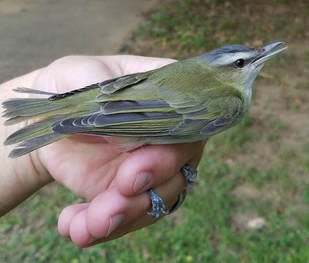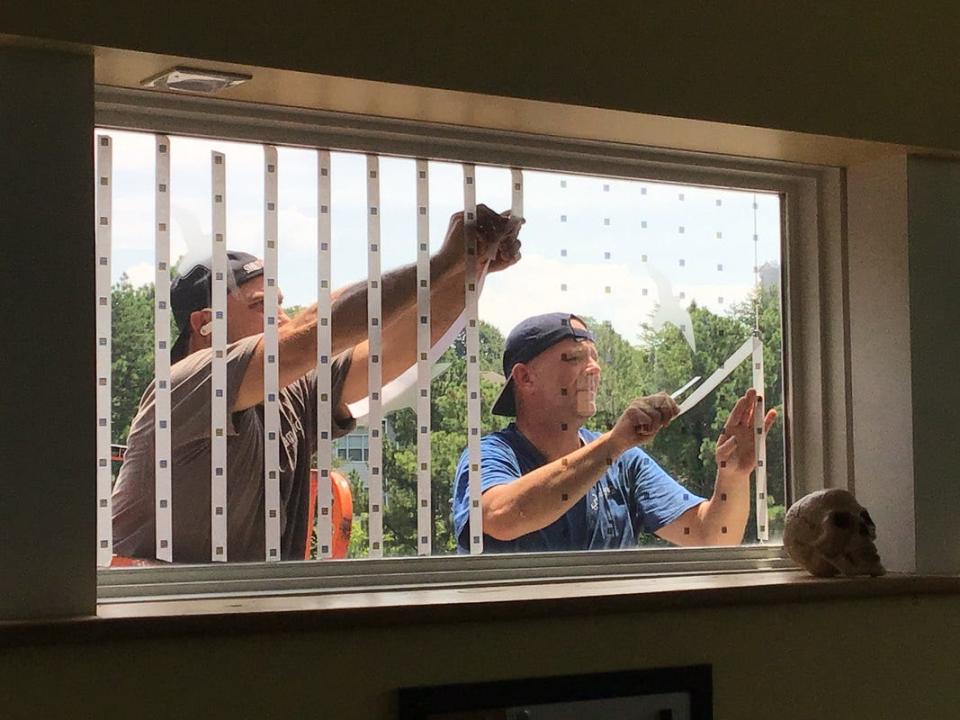Project Safe Flight offers volunteer training for birders in Savannah and Brunswick
Current research indicates as many as 1 billion birds die annually in the United States due to collisions with buildings during spring and fall migration. But residents in Savannah and coastal Georgia now have a chance to help reduce that number. Atlanta-based conservation organization, Birds Georgia (formerly Georgia Audubon), launches its ninth year of Project Safe Flight with new opportunities for locals to make a difference for potentially millions of migrating birds.
On Tuesday, April 9, Project Safe Flight offers a free and informative webinar introducing new volunteers to the program and providing first steps in the process of collecting data for the organization’s ongoing bird collision study.
Project Safe Flight expanded last fall into Savannah and Brunswick, creating new opportunities for birders, outdoor enthusiasts and concerned citizens to unite and contribute to local, regional and national scientific studies.
Sarah Tolve, coastal conservation coordinator with Birds Georgia, facilitates the webinar. She’s looking for volunteers who can commit to getting up early, aren’t too delicate about dead birds and who can commit to looking for them at least once a week. The predetermined paths wind through downtown Savannah and the campus of the College of Coastal Georgia in Brunswick.
“Volunteers receive an overview of Project Safe Flight in the webinar as well as the basics in bird collection,” said Tolve. “Later, they are given plastic bags, gloves, labels for recording time, date, and species information as well as the building the bird most likely struck. This information is uploaded to a phone app designed for our data entry. A little bit of bird knowledge is helpful but not necessary. Most importantly, a weekly commitment to getting up early and looking for the birds is key.”
After the fallen birds are collected in Savannah, they are taken to the Marine Education Center on Skidaway Island where the facility holds them in a freezer until they are sent to researchers or academic collections.

What bird species is most likely to collide with a building?
Low-rise buildings of four and five stories, account for as much as 57% of bird-building fatalities, making Savannah and Coastal Georgia a hotspot for unrecorded and unstudied avian deaths.
About 10 years ago, Adam Betuel, director of conservation with Birds Georgia, was walking in his Buckhead neighborhood. Over the course of several days, he noticed an alarming number of dead birds on multiple sidewalks near his home. Sensing a larger problem, he reached out to ornithologists and conservation ecologists within the National Audubon Network to figure out what was happening. Around the same time, his organization began receiving increased reports of dead birds in and around Metro Atlanta.
“Birds Georgia launched Project Safe Flight in 2015 to gain a better understanding of the bird-building collision problem across Georgia,” explained Betuel. “We have been studying which species are most likely to collide with buildings, how many birds are affected, and what parts of the state are most problematic. Since the program began, we’ve learned a lot about how and where building collisions are occurring, and we’ve implemented some programs and changes to help reduce collisions and make Georgia safer for migrating birds.”
Project Safe Flight provides multiple ways for Georgia residents to make their homes and neighborhoods less perilous, which is crucial because buildings of one to three stories account for at least 42% of all bird-structure fatalities.

Ways to prevent bird-building strikes
A building’s reflective windowpanes attract birds because they reflect habitat and appear as open flyways. Birds then soar into them and crash, often fatally. But with special film, the mirage can be corrected. The Burton 4-H Center on Tybee Island is one example of a successful, local retrofit orchestrated by Georgia Birds. Another is the Sandra Deal Learning Center on Jekyll Island.
Since most migrating bird species fly at night, illumination from porch lights, streetlamps and decorative city lighting often disorient birds, luring them in where they again collide with a structure. An easy solution is turning off home lighting and encouraging high-rise commercial buildings to minimize exterior lights twice a year in the peak 10 to 12 days during spring and fall migration when the greatest concentration of birds flies overhead.
Since 2017, more than a thousand building owners statewide have taken the Lights Out Georgia pledge, including 20 commercial properties in Atlanta and 300 homes in the metro area.
Though more residents and business owners are retrofitting windows and turning out lights, the fatality rate remains high, especially in Atlanta currently ranked fourth most dangerous U.S. city for fall migratory birds. But these avian deaths aren’t all completely in vain. Their remains, if collected in time, can reveal intricate, scientifically relevant information about each bird prior to its death.
Since 2015, volunteers with Project Safe Flight have collected 4,250 individuals of 135 species, with ruby-throated hummingbirds, Swainson’s thrushes, cedar waxwings, and American robins rounding out the most common. Some of the deceased birds are shared with universities and preserved as specimens within their collections. Others are sent to labs at University of North Georgia, Georgia Institute of Technology and University of Tennessee where researchers test the remains for infectious disease or examine stomach contents to understand what the birds were eating prior to death.
Dr. Charlie Kwit, a seed dispersal ecologist at the University of Tennessee, studies what Swainson’s thrushes eat. They mostly consume fruit in the fall before their long flight from Canada to Central and South America. By understanding what fruit they’re eating, Kwit gets a glimpse into the kinds of seeds they are likely dispersing.
“There’s so much information that a fresh, recently deceased bird can provide to the world,” said Kwit. “It tells me something about their diet and what they are transporting across large swaths of land. The Swainson’s thrushes we receive from Project Safe Flight tell us something about long distance seed dispersal, that they are moving seeds from north to south and adding new genetic plant material to an area.”
Kwit’s lab has analyzed stomach contents for just a few years. So far, he and his team have examined 18 Swainson’s thrushes and found six of them with seeds in their gut. He’s “99.9% certain of the likelihood” the seeds are from fruit from the bird’s most recent stopover location, which gives additional insight into the kinds of plants growing within roughly 100 miles of where the deceased bird was found.
Coastal Georgia in an important part of the Atlantic Flyway, providing habitat and food sources to millions of migratory birds each spring and fall. As Georgia Birds increases their research efforts, the organization seeks to understand how Savannah and the coast compare with their findings in Metro Atlanta.
“Most think high-rises are the only big problem,” emphasized Betuel. “But most bird mortality is happening where vegetation is reflected, and that’s concentrated around buildings four to five stories tall, the maximum height of most trees. We’d rather not find any birds, but we’re hoping to identify problem areas and begin strategies to address problem buildings. I’m looking forward to collaborating with new people as we expand our education and advocacy efforts along the coast.”
To register for the free Project Safe Flight volunteer introduction webinar, visit birdsgeorgia.org/upcoming-events.html.
To learn more about Georgia Birds and Project Safe Flight, visit .birdsgeorgia.org/project-safe-flight.html.
This article originally appeared on Savannah Morning News: Birds Georgia to train Project Safe Flight volunteers for Savannah

